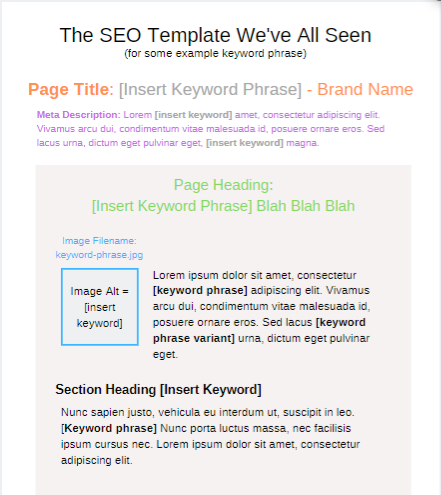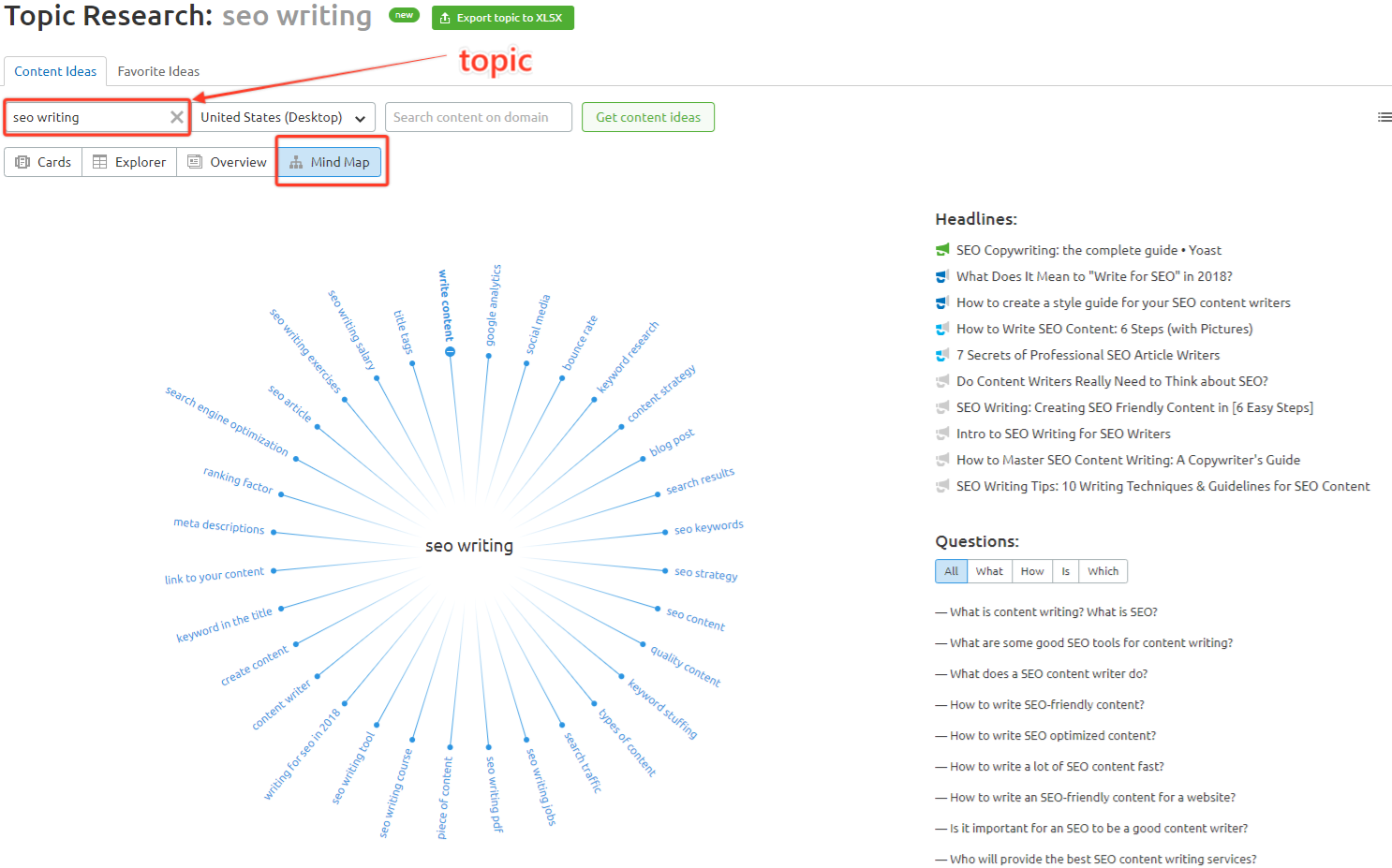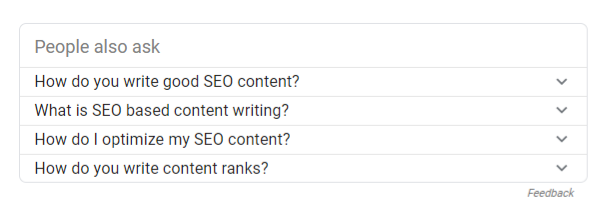If content is queen, and the critical role SEO plays a role of bridging the two to drive growth, then there’s no question as to whether or not keyword research is important.
However, connecting the dots to create content that ranks well can be difficult. What makes it so difficult? How do you go from a target keyword phrase and write an article that is unique, comprehensive, encompasses all the major on-page SEO elements, touches the reader, and isn’t structured like the “oh-so-familiar” generic SEO template?

There’s no one size fits all approach! However, there is a simple way to support any member of your editorial, creative writing, or content team in shaping up what they need in order to write SEO-friendly content, and that’s an SEO content brief.
Key benefits of a content brief:
- Productivity and efficiency – A content brief clearly outlines expectation for the writer resulting in reduced revisions
- Alignment – Writers understand the intent and goals of the content
- Quality – Reduces garbage in, garbage out.
So the rest of this article will cover how we actually get there & we’ll use this very article as an example:
- Keyword research
- Topical expansion
- Content/SERP (search engine results page) analysis
- Content brief development
- Template and tools
Any good editor will tell you great content comes from having a solid content calendar with topics planned in advance for review and release at a regular cadence. To support topical analysis and themes as SEOs we need to start with keyword research.
Start with keyword research: Topic, audience, and objectives
The purpose of this guide isn’t to teach you how to do keyword research. It’s to set you up for success in taking the step beyond that and developing it into a content brief. Your primary keywords serve as your topic themes, but they are also the beginning makings of your content brief, so try to ensure you:
- Spend time understanding your target audience and aligning their goals to your keywords. Many call this keyword intent mapping. Rohan Ayyr provides an excellent guide to matching keywords to intent in his article, ‘How to move from keyword research to intent research’.
- Do the keyword research in advance, it will allow writers and editors the freedom to move things around and line it up with trending topics.
How does all this help in supporting a content brief?
You and your team can get answers to the key questions mentioned below.
- What will they write about? Primary keywords serve as the topic in your content brief.
- Who is the intended audience? Keyword intent helps unearth what problem the user is trying to solve, helping us understand who they are, and what they need.
Now with keywords as our guide to overall topical themes, we can focus on the next step, topical expansion.
Topical expansion: Define key points and gather questions
Writers need more than keywords, they require insight into the pain points of the reader, key areas of the topic to address and most of all, what questions the content should answer. This too will go into your content brief.
We’re in luck as SEOs because there is no shortage of tools that allow us to gather this information around a topic.
For example, let’s say this article focuses on “SEO writing”. There are a number of ways to expand on this topic.
- Using a tool like SEMRush’s topic research tool, you can take your primary keyword (topic), and get expanded/related topics, a SERP snapshot and questions in a single view. I like this because it covers what many other tools do separately. Ultimately it supports both content expansion & SERP analysis at the same time.

- Use keyword suggestion tools like KeywordTool.io or Ubersuggest to expand the terms combined with Google search results to quickly view potential topics.

- Use Answerthepublic.com to get expanded terms and inspirational visuals.

- Alternatively, Ann Smarty offers up four additional tools, for related keywords to support topical expansion.
You’ve taken note of what to write about, and how to cover the topic fully. But how do we begin to determine what type of content and how in-depth it should be?
Content and SERP analysis: Specifying content type and format
Okay, so we’re almost done. We can’t tell writers to write unique content if we can’t specify what makes it unique. Reviewing the competition and what’s being displayed consistently in the SERP is a quick way to assess what’s likely to work. You’ll want to look at the top ten results for your primary topic and collect the following:
- Content type – Are the results skewed towards a specific type of content? (For example, in-depth articles, infographics, videos, or blog posts)
- Format – Is the information formatted as a guide? A how-to? Maybe a list?
- Differentiation points – What stands out about the top three results compared to the rest?
Content brief development: Let’s make beautiful content together
Now you’re ready to prepare your SEO content brief which should include the following:
- Topic and objective – Your topic is your primary keyword phrase. Your objective is what this content supposed to accomplish.
- Audience and objective – Based on your keyword intent mapping, describe who the article is meant to reach.
- Topical coverage – Top three related keyword phrases from your topical expansion.
- Questions to answer – Top three to five from topical expansion findings. Ensure they support your related keyword phrases as well.
- Voice, style, tone – Use an existing content/brand style guide.
- Content type and format – Based on your SERP analysis.
- Content length – Based on SERP Analysis. Ensure you’re meeting the average across the top three results based on content type.
- Deadline – This is only pertinent if you are working solo, otherwise, consult/lean on your creative team lead.
[Note: If/when using internally, consider making part of the content request process, or a template for the editorial staff. When using externally be sure to include where the content will be displayed, format/output, specialty editorial guidance.]
Template and tools
Want to take a shortcut? Feel free to download and copy my SEO content brief template, it’s a Google doc.
Other content brief templates/resources:
- https://izea.com/2018/05/02/content-marketing-brief/
- https://contentmarketinginstitute.com/2016/12/content-strategy-kit-marketers/content-brief-example/
If you want to streamline the process as a whole, MarketMuse provides a platform that manages the keyword research, topic expansion, provides the questions, and manages the entire workflow. It even allows you to request a brief, all in one place.
I only suggest this for larger organizations looking to scale as there is an investment involved. You’d likely also have to do some work to integrate into your existing processes.
Jori Ford is Sr. Director of Content & SEO at G2Crowd. She can also be found on Twitter @chicagoseopro.
The post SEO writing guide: From keyword to content brief appeared first on Search Engine Watch.
from Search Engine Watch http://bit.ly/2IDJogu
Comments
Post a Comment